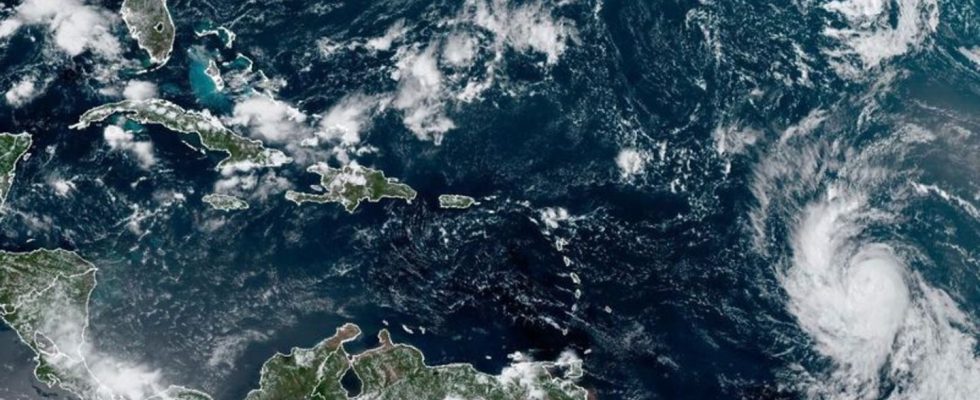storm
Hurricane Lee continues to approach the Caribbean islands
Tropical Storm Lee has been upgraded to a hurricane. photo
© Uncredited/NOAA/AP/dpa
As it moves over the sea, the storm is expected to develop into a “very strong, large hurricane.” Large waves, dangerous currents and surf are feared.
The powerful hurricane “Lee” has weakened slightly, but continues to threaten the Caribbean islands. The A Category 4 cyclone rotated over the Atlantic with sustained wind speeds of up to 250 kilometers per hour, according to the US Hurricane Center (NHC) in Miami.
Dangerous conditions are expected on the coasts of the western Atlantic. Lee is forecast to pass well north of the Lesser Antilles, Virgin Islands and Puerto Rico over the weekend and early next week.
According to the NHC, “Lee” was located around 910 kilometers east of the northern part of the Lesser Antilles, which includes Antigua and Barbuda, St. Kitts and Nevis and Montserrat.
Meteorologists had already assumed for the past few days that “Lee” would develop into a “very strong, large hurricane” as it moved over the sea north of the islands. Further fluctuations in intensity are possible. Wind speeds of 119 kilometers per hour or more are called a hurricane.
Hurricane season begins May 15 in the Pacific and June 1 in the Atlantic. It ends in both regions on November 30th. Tropical cyclones form over warm ocean water. Global warming increases the likelihood of severe storms.
The strength of hurricanes is measured according to a scale developed by meteorologists Herbert Saffir and Robert Simpson: A Category 1 hurricane reaches speeds of up to 153 kilometers per hour. Level 2 applies up to speeds of 177, level 3 up to 208 and level 4 up to 251. Devastating damage is threatened by a hurricane of the highest category 5, which rotates with a wind speed of more than 251 kilometers per hour. Hurricanes often gain strength as they move over the sea. They quickly lose their strength over land because there is no supply of warm, moist air masses.

